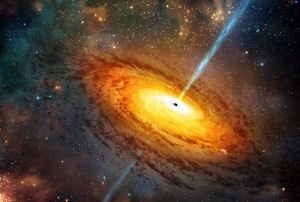
By shooting a beam of neutrinos through a small slice of the Earth under Japan, physicists say they’ve caught the particles changing their stripes in intriguing new ways.
The experiment – known as T2K – uses the Japan Proton Accelerator Research Complex (J-PARC), located on the east coast, to shoot a beam of muon neutrinos 185 miles underground toward the Super-Kamiokande, or Super-K, detector in Kamioka, near Japan’s west coast. The goal of the experiment is to observe the particles changing “flavors” from muon neutrinos to electron neutrinos on their journey.
Neutrinos are elementary particles that come in three flavors – muon, electron and tau. In past experiments, physicists have measured the change of muon neutrinos to tau neutrinos and electron neutrinos to muon neutrinos or tau neutrinos. “But no one had seen muon neutrinos turn into electron neutrinos,” said Duke University physicist Chris Walter.
Walter is a member of the T2K collaboration, which began observing the neutrinos for their transformations in January 2010. Thy measured the neutrinos, determining their flavor near the accelerator and then again at Super-K. So far, scientists caught 88 neutrinos with their detector. Six of these likely began their lives as muon neutrinos and turned into electron neutrinos on their way to Super-K.
The preliminary findings were submitted to Physical Review Letters, but Walter remains cautious. He explained that the T2K team has taken a little less than two percent of the planned neutrino measurements, partly due to the recent earthquake which forced the shutdown of T2K.
But if the “indications” become “measurements,” the T2K results will be the first to measure a muon-electron neutrino change. Scientists want this measurement to study a fundamental parameter of physics called theta-13, which controls the muon-electron neutrino switch. Walter said there is more than one way to measure theta-13 and that several experiments are currently competing to be the first.
“It’s good news that we have evidence of a relatively large theta-13, since there are even more interesting measurements that can be done if it is big enough,” he said.
If theta-13 is large, it will allow scientists to measure the difference between oscillations of neutrinos and oscillation of anti-neutrinos. Walter explained that just after the Big Bang, “something caused there to be slightly more matter than anti-matter. When the matter and anti-matter annihilated each other, only that little bit of matter was left over. That matter is everything we see around us today. But no one understands how this happened. The difference between neutrino and anti-neutrino properties that we might measure in future experiments might give us clues to how the excess matter was generated.”
T2K is still shutdown, but Walter believes it will be back online at the end of 2011.
Related:
Neutrino Boogie Upsets Standard Model
MINOS Project Detects Ghostly Particles Changing “Flavor”
New Sub-Atomic Particle Proposed








Comments are closed.